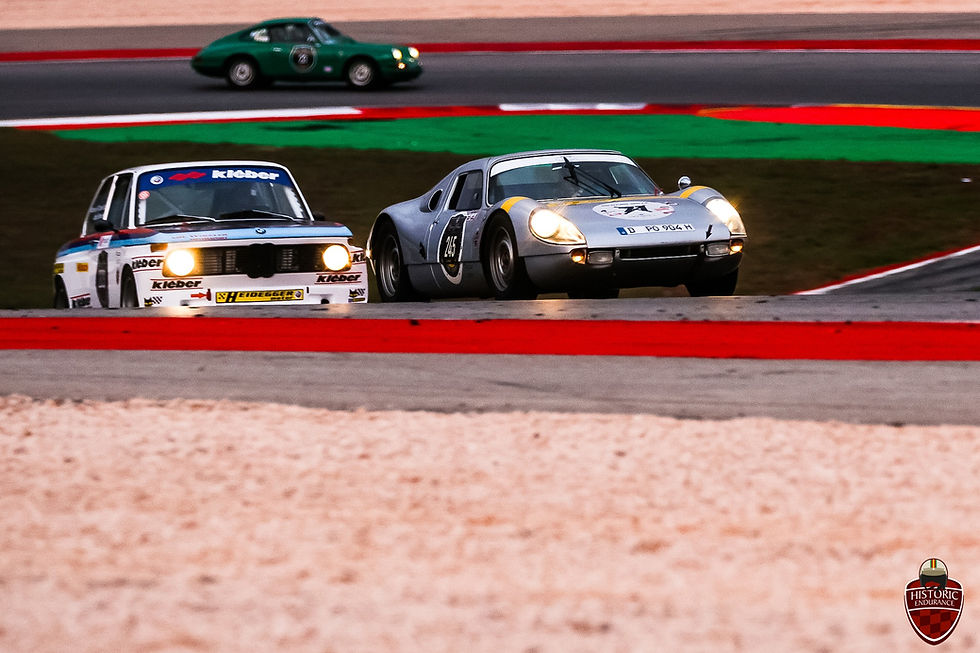Historic Endurance revives the 3 Heures de Pau
- Race Ready
- Apr 6, 2023
- 3 min read
Updated: Jun 1, 2023
The Historic Endurance grid is divided into two “Plateaux"
Drivers can run in both “Plateaux" using different cars
Prize for the overall/combined races winner

The Pau Classic Grand Prix is always a highlight of the Iberian Historic Endurance season. However, this year, the return to the streets of the Atlantic Pyrenees town will feature more track action, as well as a different sporting format. There will be four Historic Endurance races, promising to be a fitting tribute to the historic "3 Heures de Pau".
Locals in Pau say that the Classic Grand Prix is not just nostalgic, as it knows how to renew itself, reigniting the flame of a glorious past. In 2023, the "3 Heures de Pau" will be revived through the four 45-minute races of the most highly regarded classic car series in southern Europe.

At the French event, the Historic Endurance field will be divided into two "plateaux". The first plateau will include four classes: Gentlemen Driver Spirit (touring cars up to 1965 up to 2000cc + MGB + Porsche 911 SWB), Pre-1961, Pre-1966 and GTP & Sports Cars Pre-1966. The second plateau will include Gentlemen Driver Spirit (touring cars up to 1976 up to 2000cc), H-1971 and H-1976.
Each "plateau" will have two separate 45-minute races, meaning that Historic Endurance will have a total of four races on the winding Circuit de Pau-Ville on the weekend of 20 and 21 May, for the first time.
The driver who completes the most laps in the four Historic Endurance races will win the "3 Heures de Pau" trophy. Any driver can enter both "plateaux" and add laps to try to conquer this revived trophy.

A BIT OF HISTORY
The "3 Heures internationales de Pau" were a series of three races reserved to Grand Touring cars, lasting three hours each, organised by the Association Sportive de l'Automobile-Club Basco-Béarnais on Easter weekend of 1958.
The first of the endurance races of the XVIII Grand Prix de Pau, for cars up to 1000cc, was contested on Easter Sunday. The French duo Gérard Laureau/Jean-François Jaeger, on a DB Panhard, got the better of Paul Condrillier from France, who won the 751cc class on an Alpine Renault, in a race where the skill of the drivers and the reliability of the machines dictated the outcome.
After a short break, the second race took place, divided in two classes: 1101cc to 1300cc, where several Alfa Romeo Giulietta Sprint Veloce and two Lotus Eleven took part, and 1301-2000cc, formed by Porsche Carrera Speedsters and coupés, AC Ace-Bristols, among others. The French-Brazilian duo Jean-Claude Vidilles/Hermano da Silva Ramos in a Lotus Eleven won overall and among their class competitors, while Italian Giancarlo Sala in a Fiat 8V Zagato was second to cross the finish line and won the 1301-2000cc class.
The third and final race was reserved for cars over 2,000cc and ended up being exclusively contested with Ferrari 250 Europa. The rumbling of ten 12-cylinder Ferrari engines echoed through the Pyrenees for three hours straight, and in the end, Belgian favourite Olivier Gendebien of Ecurie Francorchamps sipped the champagne of an irrefutable victory.
Commenting on this race weekend, Diogo Ferrão, the CEO of Race Ready, said, "The circuit authorities challenged me to redo the three-hour race of Pau, but due to refueling difficulties, it would have been impossible to do today. However, the fact that the entries were sold out just 40 days after opening them prompted us to recreate this format used in the past and divide the field into two. Unlike in the past where cars were divided by cylinder capacity, we will now divide them by age, allowing cars built between 1955 and 1965 to participate in "Plateau 1" and those built between 1966 and 1976 to participate in "Plateau 2." This is a more current concept that enables a driver/team to enter two cars and have a double chance to participate."




Comments